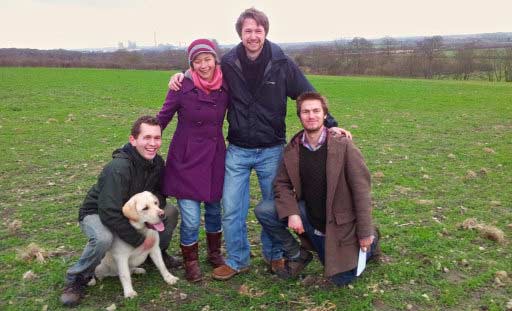
(maize and Inga alley cropping)
When human populations were tiny and the forests seemingly limitless slash and burn may have been a sustainable form of agriculture, but that era is long since passed: now we need something better. Feeding 7 plus billion of us, lowering atmospheric Co2 and overcoming poverty requires humanity to find better ways to manage fragile tropical forest ecosystems.
One of the best practices has been pioneered by British tropical agronomist Mike Hands and the organisation he founded, The Inga Foundation. He has worked with communities in Central America who practiced slash and burn or swidden agriculture. They were forced to move-on every few years into new areas of forest, but as populations have grown the long periods of fallow are no longer possible and the forest cannot properly regenerate. This is particularly a problem with the poor acidic soils so common in rainforest areas.
The Inga is a family of trees with about 300 species occurring in the tropical Americas, each suited to particular soils and altitudes. Most of these species of Inga germinate quickly, grow rapidly and are tolerant of the poor acidic soils of the region. They fix nitrogen, host mycorrhizal fungi and so aid soil fertility, and their leaves make a wonderful water and soil conserving mulch. They are perfect for alley cropping with maize and beans, provide good shade to valuable cash crops such as coffee, cacao, pepper and vanilla and can be used as a nurse crop to establish mahogany and the inga themselves provide valuable edible fruits and fuelwood.
With the increased fertility afforded by Inga alley cropping, maize, beans and other crops can be grown and rotated year after year on the same land, taking the pressure off the remaining forests and allowing communities to settle permanently, grow more valuable perennial cash crops, increase their incomes and send their children to school.
When I first read about all this in an article in The Ecologist Magazine in 2005 I was really impressed. I’ve cited this as an example of really good land use in numerous talks. Now it is very good to hear that Mike Hands and the Inga Foundation have received a grant of $3 million to fund a 10 year programme to develop this work in the Rio Cuero area of Honduras.
See more here http://www.ingafoundation.org/
Monthly Archives: February 2012
UK needs a million more farmers!

(Cultivate Oxfordshire: 5 people, 5 acres)
The Food Programme on Radio 4 is often a very good listen. The edition that was first broadcast on 22/1/12 was particularly good. It looked at a number of examples of new models of growing, buying and selling food, and of people trying to influence the global food economy in positive directions. Colin Tudge and Graham Harvey founded the Oxford Real Farming Conference which is now in its fifth year. Colin Tudge sums up his arguments in nine words “plenty of plants, not much meat, and maximum variety”. A diet that is best for our health, for the environment, and that will feed nine billion of us in years to come should be based on lots of local, ideally organic, fruit and vegetables, with smaller quantities of good quality, local, organic, pasture fed meat. Colin Tudge argues that the UK needs a million more farmers.
These new farmers will be very different from most modern farmers. They will need to pioneer all manner of new ecologically sustainable farming systems that connect in new ways to the people who will eat the produce. They will tend to run very labour intensive operations, using polyculture, permaculture, aquaculture, horticulture, greenhouses and polytunnels. They will be largely community supported, often having social, educational and energy generation roles alongside food production. The food programme mentioned lots of ideas and projects, two of my favourites were Incredible Edible Todmorden and Cultivate Oxfordshire.
The Cultivate project is a group of five young people just starting a five acre market garden in South Oxfordshire. Note the people to land ratio: one person to one acre. At a time when conventional agriculture is arguing that we need ever bigger farm units to make a living these new entrants are moving in exactly the opposite direction. They are a not-for-profit social enterprise, currently raising capital via a community share offer, strongly linked to their local community and pioneering new methods of marketing their produce directly to people wherever demand in the local community seems to be, at school gates, railway stations or wherever. To make this work they’ll need very good support from and communication with their local community. I wish them well.
When I first heard about Incredible Edible Todmorden a few years back I was a bit sceptical as they seemed to be promoting guerrilla gardening which to me as a long time veg grower seemed a bit too chaotic. They’ve certainly proved me wrong. They’ve gone from strength to strength, gaining massive community involvement with every school, the fire station, railway station, council and it seems just about everyone in the town of 15,000 people involved. They have ambitious plans for community self-sufficiency in food and are initiating projects galore, including an integrated aquaculture/horticulture project at the High School that seems to draw on some of the ideas from The New Alchemy Institute and Growing Power systems that I wrote a couple of blogs about in April 2011. Exciting stuff!
Listen to the programme here and follow some of the many links
http://www.bbc.co.uk/programmes/b019rd9c#related-links
http://www.cultivateoxford.org/
http://www.incredible-edible-todmorden.co.uk/home
